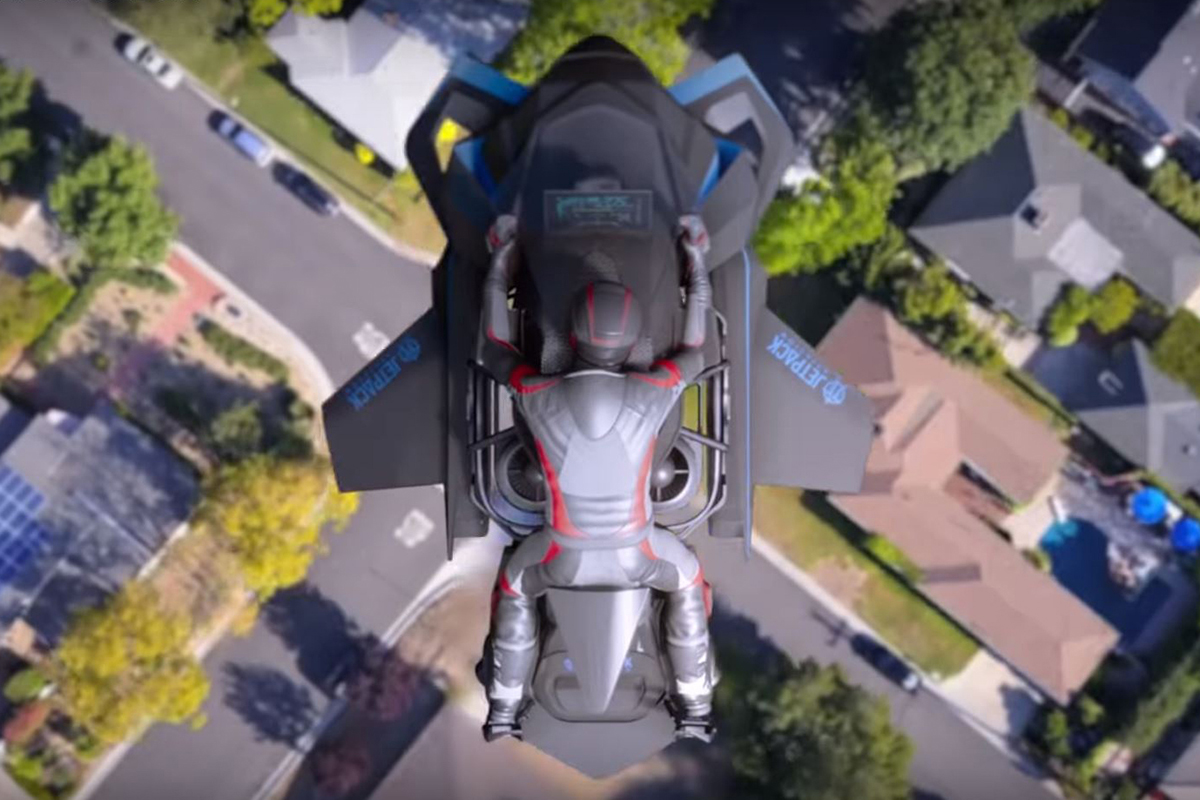Another day, another high-powered, overpriced tech toy that we can only daydream about. This year, we’re asking Santa Claud for The Speeder, a sci-fi-inspired personal hoverbike that maker JetPack Aviation purports to be “the world’s first flying motorcycle.” First or not, we definitely want one.
The hyper-futuristic angular design of The Speeder pulls inspiration from Star Wars and Batman’s garage. It’s a compact, personal hoverbike that feels like a stolen, mil-spec Black Ops project made available to well-heeled thrillseekers.
By the numbers, The Speeder is as impressive as it is terrifying. Four onboard diesel- or kerosene-powered jet turbines push 750 pound-feet of thrust, capable of propelling the bike to a top speed of 150 miles per hour. JetPack Aviation promises the bike can soar to an altitude of 15,000 feet with a 20-minute maximum run time (depending on the rider’s weight). With touchscreen navigation, fly-by-wire guidance, and a 360-degree automatic collision-avoidance system, what could possibly go wrong?
As vehicle technology continues to advance and shrink, luxury manufacturers are pushing the envelope with their catalog of toys. Last year, London’s Selfridges department store debuted a limited edition, 1,000-horsepower Iron Man-style jet pack suit. This January, FlyNano released their one-man seaplane — no pilot’s license required! Fingers crossed, we’ll live to see the age of flying cars that we’ve been promised since The Jetsons premiered in the ’60s.
For now, one thing is for sure: If anyone has the chops to build a production model, high-speed hoverbike, it seems JetPack Aviation does. The California-based company spent the last ten years focused on state-of-the-art VTOL (vertical take-off and landing) technology. In 2015, their CEO flew the world’s first portable jet pack around the Statue of Liberty and the company has been honing its craft ever since.
Of course, the best toys rarely come cheap especially when you consider only 20 recreational models will be released. The JetPack Aviation Speeder is priced at $380,000 with a $10,000 down payment — training, personalized flight suit, and helmet included. If that seems excessive, however, the company is even throwing in a swag kit with a free hat, T-shirt, and key chain. So, there’s that.





